A BETTER WAY
TO LEARN BIOLOGY
Forget everything you know about online learning. BioBeyond is better than anything you've seen before.
Get Access To CourseA LEARNING JOURNEY
INSPIRED BY A BIG QUESTION
BioBeyond is the first online course of its kind. It's more than a syllabus and list of lessons. It motivates students with an awe-inspiring Big Question narrative, and uses projects to meet foundational learning objectives and teach the biology needed to seek answers.
Students move away from pure fact memorization and get excited to form a deeper understanding of scientific reasoning and modern science. BioBeyond takes students to the edge of today's knowledge, voyaging with them into the unknown.
It's education through exploration.


BioBeyond is an introductory biology course centered on the authentic, compelling question of how to find life in the universe. As students investigate the possibilities, they learn everything included in a standard first year biology curricula.
BIOBEYOND TAKES YOU PLACES
Students seek answers to their questions throughout the different units, going on virtual field trips to key global locations such as the Galapagos Islands, traveling down into a cell, voyaging outward to Mars, and more. GO ON A VIRTUAL FIELD TRIP
A PERSONAL
LEARNING JOURNEY
ADAPTIVE PATHWAYS
UNIQUE FOR EVERY LEARNER
BioBeyond is built on an adaptive learning platform. Lesson pathways cater to individual knowledge and skills, motivating and supporting both struggling and advanced learners.
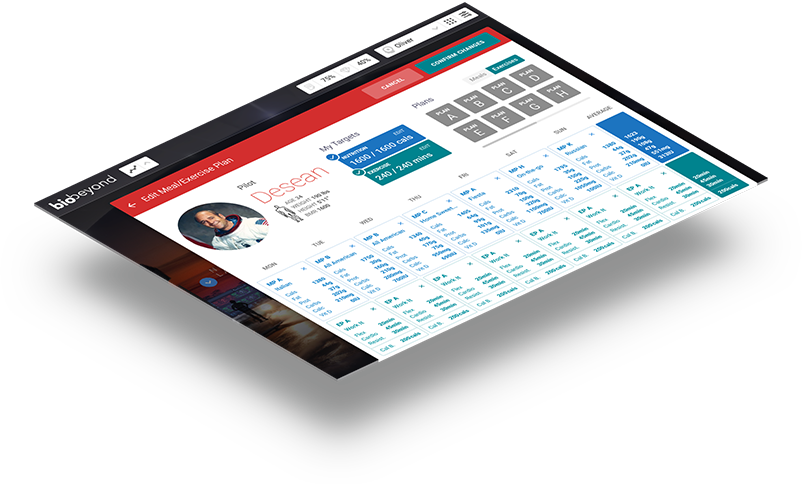
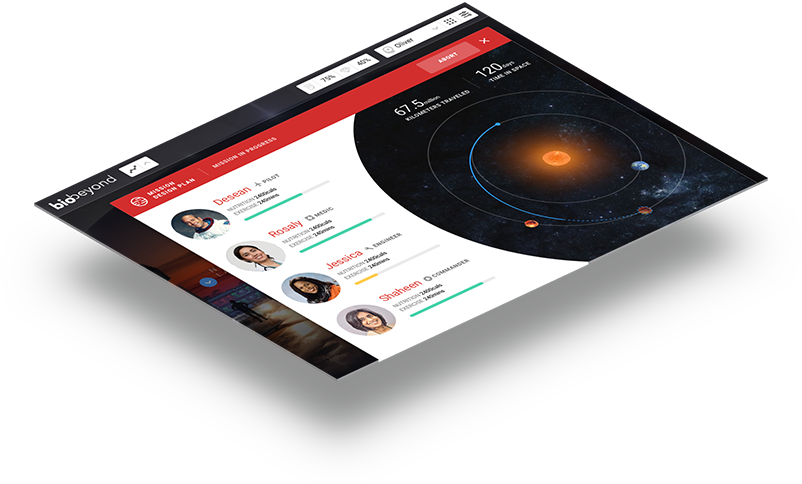



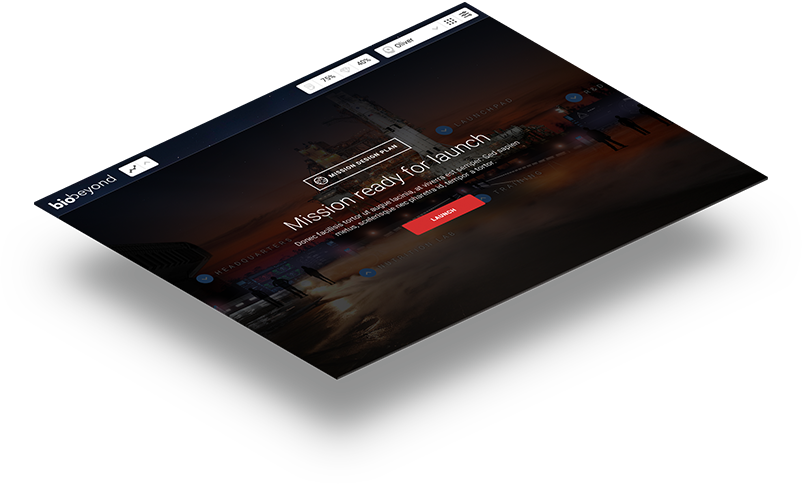
ADAPTIVE FEEDBACK
WITH ADVICE A TUTOR WOULD GIVE
As they work, students receive adaptive feedback they need right when they need it to guide them through challenging material.
LEARNING COMPANION
SAY HELLO TO BEAGLE
Beagle is a personal learning companion that guides students through their exploration and learning experiences. Beagle offers advice and remediation as well as a variety of learning tools that students carry throughout their learning journeys.


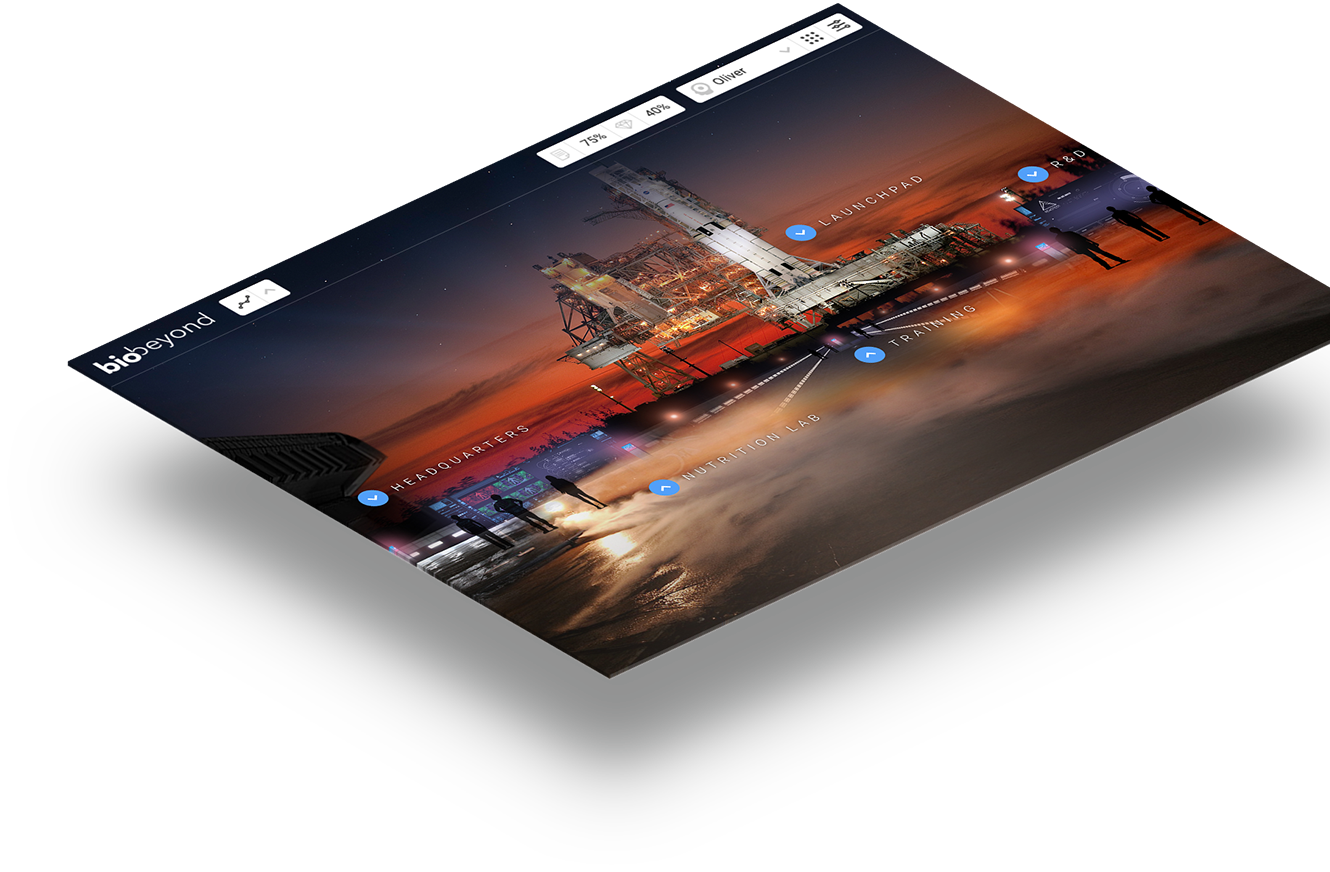
PROMOTING ACTIVE LEARNING
Learning by doing with real-time guidance is the best way to learn. How do you effectively scale your effort to every student? BioBeyond engages students with beautifully-designed, scientifically-accurate simulations and real-world problem solving activities where students analyze, evaluate, and synthesize content in a whole new way, all while getting tailored feedback and advice. Now, take a journey into a living human cell to experience next-generation learning by doing.
JOURNEY INTO THE CELLactive & adaptive lessons
immersive virtual field trips
hours of learner engagement
integrative projects
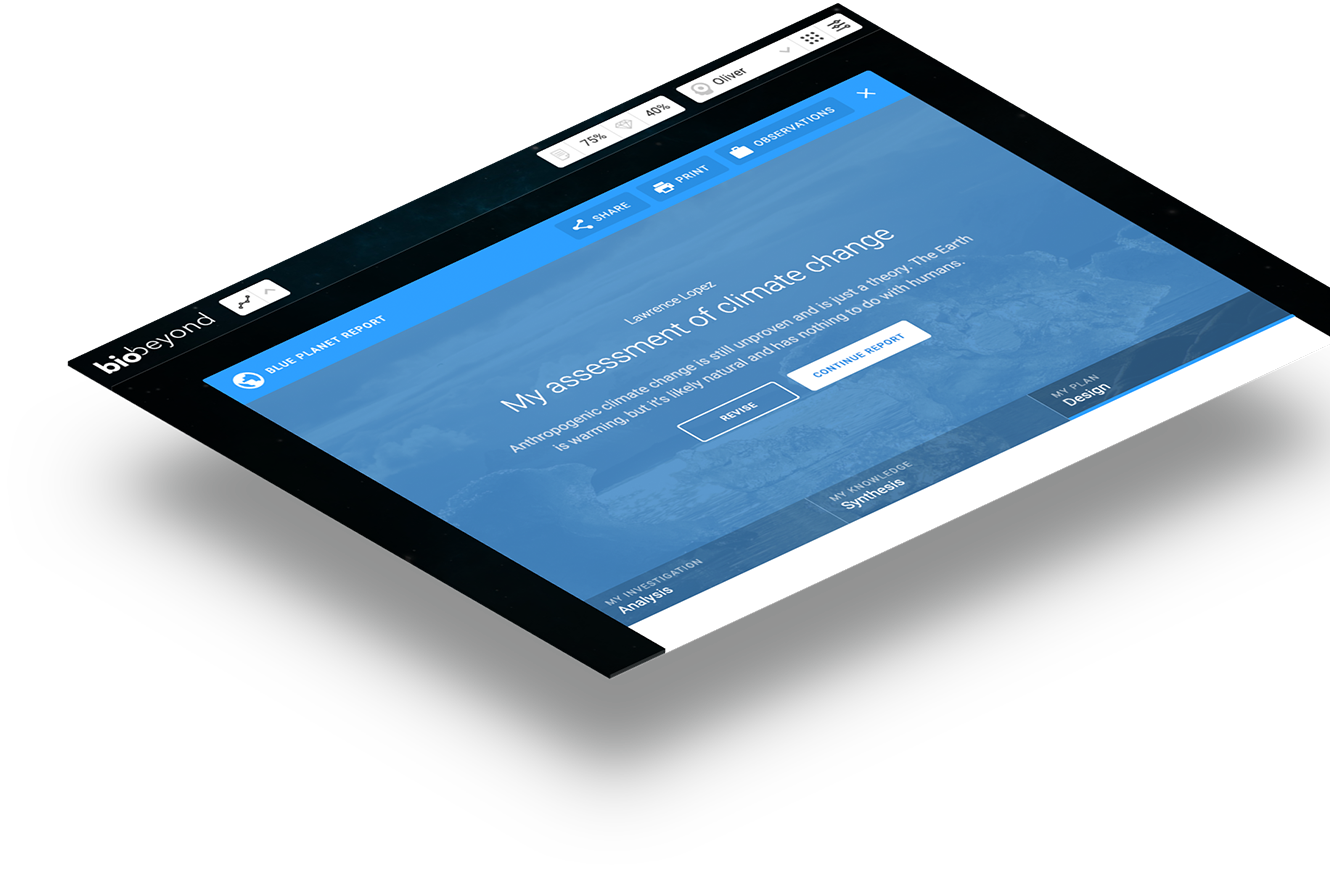
POWERED BY
SMART SPARROW
BioBeyond is a paradigm shift in learning design it focuses on the whole learning experience rather than just relaying content. It was designed from the ground up to meet instructors' teaching needs and help students learn using cutting-edge adaptive technology.
TURNKEY SOLUTION
A complete online course that maps to standard introductory biology curricula
LMS INTEGRATION
Integrate it with your learning management system to enable gradebook sync and single-sign on
CLOUD BASED TECHNOLOGY
Tablet-ready and nothing to download for you or your students
SCALABLE AND COST EFFECTIVE
Supports classes of any size, anywhere, for far less than the cost of a textbook
FLEXIBLE AND MODULAR
Easy for instructors to adopt in both fully-online and blended classrooms
SUPPORT AND TRAINING
The Inspark Network provides full-time student support and instructor training
RESEARCH AND EVALUATION
Ongoing evaluations of learner experience to improve the course every semester
STUDENT ARTIFACTS
Even after courses end, students will still have access to their projects

Biology Bootcamp
How do we study biology?
Unit Goal
Students use real-world examples, experiments and simulations to define common scientific terms and practices that will guide them on their journey through BioBeyond.
Topics Covered
Nature of science, Hypotheses, Theories, Laws, Graphing, Correlation, Uncertainty, SI units, Critical thinking, Experimental design, Error, Bias
Unit Standards
- Identify and describe the philosophical assumptions and limitations of scientific reasoning
- Describe, and apply the scientific method of reasoning including basic techniques such as positive and negative experimental controls, drawing conclusions from data, and accounting for uncertainty
- Differentiate among facts, hypotheses, theories, and predictions
- Use a model to generate and test hypotheses
- Read and interpret graphs, scientific writing, and representations or schematics
- Apply critical thinking and scientific reasoning to evaluate claims
- Distinguish between dependent and independent variables and identify relationships between them.
- Apply the SI system of units to measurements of mass, length, and volume
- Express and discuss uncertainty in measurements, observations, and experiments

World Biodiversity Expedition
What is life?
Unit Goal
Students observe at least 50 organisms from common and exotic biomes worldwide, recording traits used to classify the organisms in a Linnean-like system.
Topics Covered
Biodiversity, Traits, Classification
Unit Standards
- Describe physical and/or behavioral characteristics of many species from several existing biomes, including familiar and so-called 'extreme' environments
- Apply data gathered from observations and descriptions of species to the construction of a system of classification
- Compare and contrast a self-made system of classification to the Linnaean system
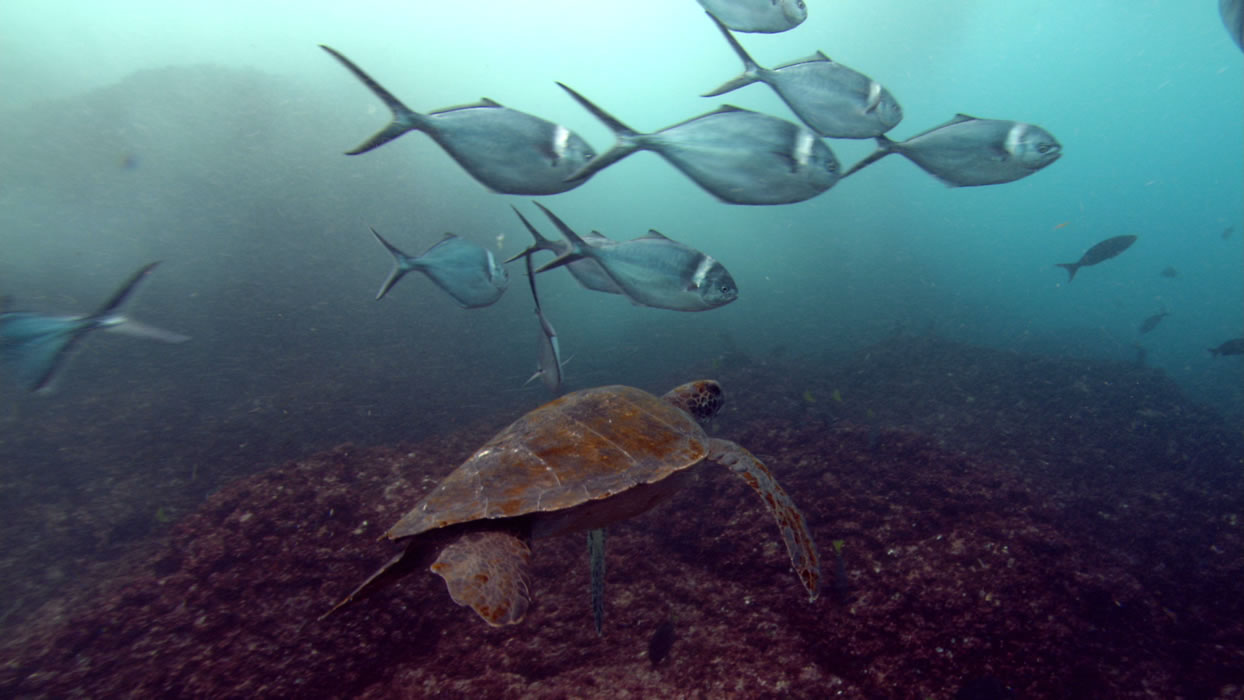
Journey to the Galapagos
How did life get so diverse?
Unit Goal
Students use published data and real-life examples to describe the theory of evolution by natural selection, including population trait distributions, Mendelian and non-Mendelian genetics, selective pressures, and speciation events.
Topics Covered
Mendelian genetics, Non-Mendelian genetics, Environmental selective pressures, Predatory selective pressures, Speciation, Evolution
Unit Standards
- Describe the theory of evolution by natural selection and its key concepts: adaptation to environment, descent with modification, and reproductive fitness
- Apply the concepts of the theory of evolution to account for the hierarchy of shared characteristics via the Tree of Life
- Describe Darwin's observations and hypotheses regarding natural selection and speciation
- Define the biological species concept
- Differentiate between allopatric and sympatric speciation
- Describe Mendel's laws of inheritance (segregation, independent assortment, dominance) and the experiments that led to those laws
- Make predictions and interpret results of single and double trait crosses using Punnett squares
- Describe how chromosomes, genes, alleles, and DNA relate to each other
- Make predictions and observe patterns associated with genetic diseases in a pedigree
- Use data and observations to define concepts of exponential and logistic growth, carrying capacity of an ecosystem, and other factors limiting population distributions and dynamics
- Describe various inter-species interactions including competitive, mutualistic, predator/prey, and parasitic relationships
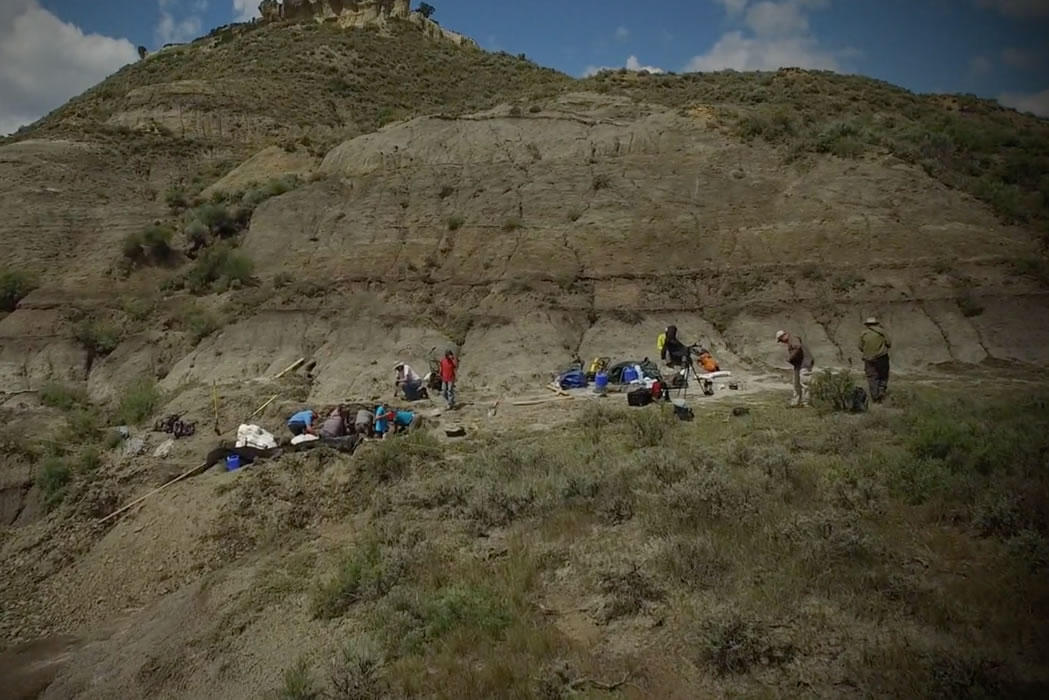
Time Traveler’s Guide to Life on Earth
How did life evolve?
Unit Goal
Students trace the evolution of life on Earth through immersive virtual field trips to three significant fossil record sites documenting the fall of dinosaurs, rise of animals, and earliest signatures of life on Earth to determine what type of life is most likely to be found on other worlds.
Topics Covered
Paleobiology, Geologic evidence, Ancient organisms, Evolution
Unit Standards
- Describe physical and/or behavioral characteristics of many species from several extinct biomes, including familiar and so-called 'extreme' environments
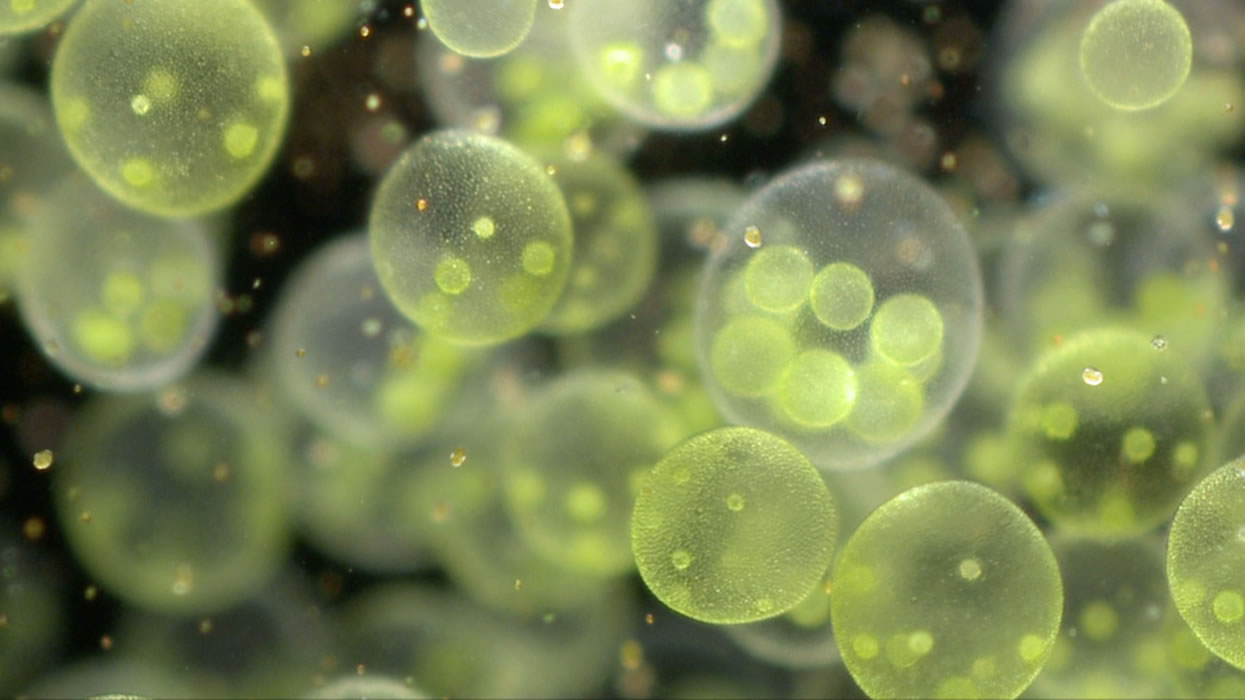
Into the Cell
What is life made of?
Unit Goal
Students explore cellular anatomy through an interactive, three-dimensional, scientifically accurate model of the cell, performing various actions to enable cellular function in order to identify the features and functions of life that may be present on other worlds.
Topics Covered
Animal cell anatomy, Plant cell anatomy, Prokaryotic cell anatomy
Unit Standards
- Identify structures and components of prokaryotic and eukaryotic cells including the cell wall, cell membrane, nucleus, ribosomes, genetic material, mitochondria, and chloroplasts
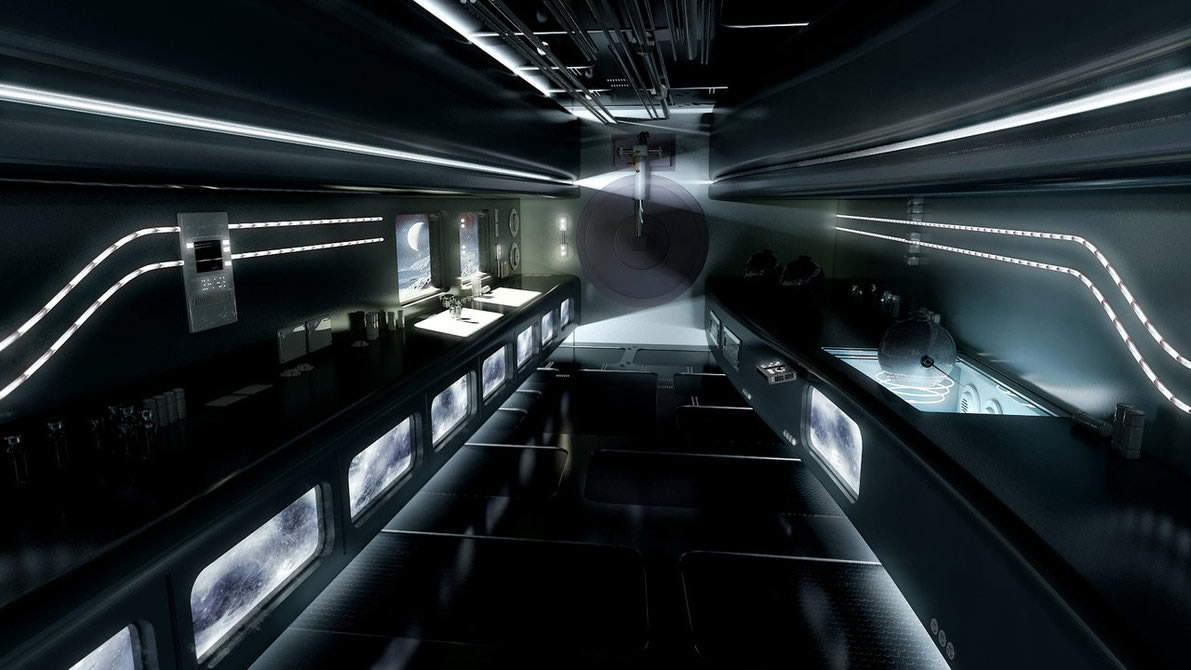
Searching for Signatures
How could we test for life beyond Earth?
Unit Goal
Students explore the chemical structure, function, and reactions of Earth-based life, seeking common biochemical threads that provide clues to aid in the search for existing and past life on other worlds.
Topics Covered
Introductory chemistry, Biomacromolecules, Metabolism, Aerobic and anaerobic respiration, Oxygenic and anoxygenic photosynthesis, DNA structure, Mitosis, Meiosis, Binary fission, DNA replication, DNA transcription, Translation
Unit Standards
- Identify structures and components of prokaryotic and eukaryotic cells including the nucleus, ribosomes, genetic material, mitochondria, and chloroplasts
- Identify and distinguish the structure and function of the four major classes of macromolecules used by biological systems: proteins, lipids, carbohydrates, and nucleic acids
- Describe the process and outcomes of mitosis
- Define the concepts of atoms, molecules, chemical bonding, pH, and the polar nature of water as they apply to the structure and function of biological molecules
- Describe and apply the tenets of cell theory: all cells come from other cells, all life is made of cells, cells are the basic units of life
- Identify various forms of energy in the physical world and biology using proper units of measure (J, cal, kcal)
- Outline the process of aerobic respiration including cycles/processes involved, input and waste molecules, and key electron carriers
- Outline the processes of fermentation and anaerobic respiration including cycles/processes involved, input and waste molecules, and key electron carriers
- Outline the process of photosynthesis including cycles/processes involved, input and waste molecules, and key electron carriers
- Define the general steps of meiosis, its outcomes, and its relationship to sexual reproduction
- Identify and describe the structure of DNA as well as the relationship between DNA structure and replication of the molecule
- Describe and demonstrate the processes of transcription and translation
- Identify and describe the structure of RNA as well as some of its roles within the cell.
- Compare the outcomes and roles of mitosis and meiosis
- Contrast the processes of mitosis and binary fission
- Apply the concept of the central dogma of biology in the context of various mutations and predict the general effect of the mutation on the finished protein
- Apply concepts of genetic information and mutation to evolution

Blue Planet
What is the future of life on Earth?
Unit Goal
Students investigate the changes in Earth’s climate over the recent past, comparing those changes to historical data to identify trends and project impacts, then design a plan to reduce the impact of the present observed warming trend.
Topics Covered
Greenhouse effect, Carbon cycle, Historical and present causes and effects of climate change, Ecological consequences of climate change
Unit Standards
- Define, from observation and data, the roles of various components of the atmosphere as they influence climate
- Describe and evaluate patterns of global climate change revealed through data, including the role of natural and anthropogenic processes
- Analyze paleobiological and geological evidence from past global-scale warming and apply observed patterns to the current observed warming trend and evidence.
- Identify natural and anthropogenic sources and sinks of carbon dioxide in Earth's atmosphere.
- Construct and use a model of anthropogenic effects on atmospheric carbon dioxide levels to evaluate possible future scenarios.

A Mission Beyond
What is the future of life beyond Earth?
Unit Goal
Students design a crewed mission to Mars, exploring what we currently know about how prolonged spaceflight affects the muscular, skeletal and cardiovascular systems and then deciding how to counteract these challenges by selecting their crew and equipment, and designing diet and exercise plans for the mission.
Topics Covered
Anatomy and physiology, Homeostasis, Energy balance
Unit Standards
- Identify and distinguish the major components of the muscular, skeletal, cardiovascular systems in humans
- Compare the state of anatomical and physiological systems under stress to their normal state and analyze the long-term effects of remaining in the stressed state
- Describe the structure and nature of positive and negative feedback in biological systems using at least two model systems and including disruptions to the normal state of those systems
- Describe the physiological mechanisms of glucose regulation as a homeostatic system, and analyze failure of that regulation as it relates to diabetes
- Perform an energy balance of an organism